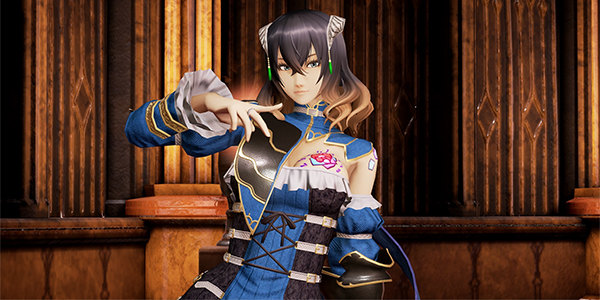
Koji Igarashi ha aggiornato la pagina Kickstarter di Bloodstained: Ritual of the Night, gioco attualmente in fase di sviluppo presso gli studi di Inti Creates e che sarà disponibile tra due anni. All’interno del post pubblicato dal creatore del gioco vengono trattati alcuni aspetti del gameplay come la creazione procedurale di alcuni elementi.
“Hello everyone! This is IGA.
It’s chilly here in Japan and I’ve caught the cold. My throat is sore and I’ve lost my voice.
But I’d like to give you an update regarding the environment of Bloodstained. First, we are going to change the way the environment is visually represented. Watching people play the E3 demo, I could see that players often didn’t know where a platform was, or whether the thing they were looking at was a wall or something they could pass through.
We’ve improved visibility by making the “front” side of platforms brighter, and more distant parts of the environments darker.
This is actually not the first time I’ve talked about the change in visual representation. During the time we’ve announced the delay, I talked about how we needed to change our environment-building method in order to work more efficiently.
After that article mentioned procedural generation, lots of backers in the forum expressed their concerns. To address those concerns, I’d like to explain our reasons for changing the development process and explain the way procedural generation will be used in the final product.
Before, we worked on environments on a texture-by-texture basis, which meant that each area required the individual time and attention of skilled artists and designers. To use our team more wisely, our new process is based more on physics, and makes use of procedural generation.
Naturally, you might be asking, what kind of procedural generation? How will it be used, and for what? To put it simply, we’re using it to auto-generate environmental grime and destruction effects.
We put together some comparison screenshots and video for this update to demonstrate the effect. On each image, the top is before procedural generation, and the bottom is after. Until now, roughness and shadows were drawn on the texture map to add surface texture (shadows, dirt marks, etc. on the albedo map). “
“As a result of that process, the same pattern appears to loop in various places. Trying to increase the variation on a hand-drawn process like that would require a disproportionately large amount of resources.
The “after” image is using our procedural generation process. In this case, we’re merging procedurally generated dirt marks and surface textures. As a result, we can produce an asymmetrical visual output easily and efficiently.
By automatically generating destruction, we can even create variation among the same assets. (Take a look at the red circle in the comparison image.) The green circle shows the procedurally generated dirt marks that help us avoid a continuous, looping look.”
“Since we’re releasing this game on high-spec machines, I felt it was necessary for the graphics to offer a high level of detail. “
“Next month, or I should say, near Christmas, I hope to show you a new environment made using this process…”
Bloodstained: Ritual of the Night è programmato per la prima metà del 2018 su Nintendo Wii U, PlayStation Vita, Xbox One, PlayStation 4 e PC.

